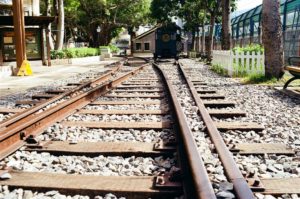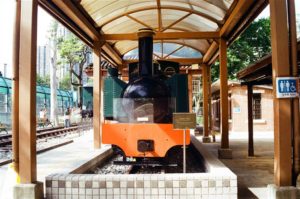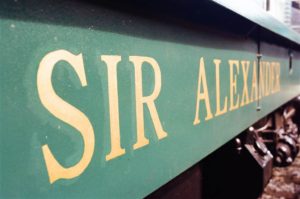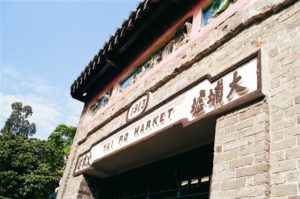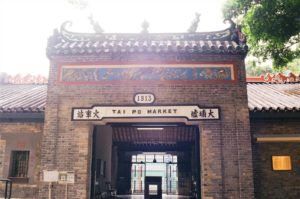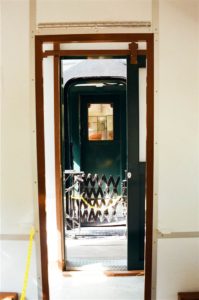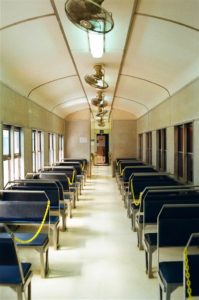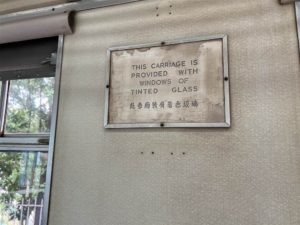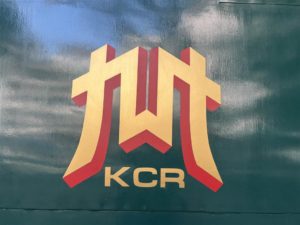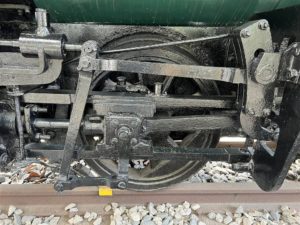The Hong Kong Railway Museum

I spent a delightful 1.5 hours at the Hong Kong Railway Museum in Tai Po Market. I have been there once, but I did not study the museum exhibits last time. This time, I allowed myself a leisurely walk in the museum and the train compartments on display. All the things I saw there brought me back to a time past, most of which I had not personally experienced.
However, I am old enough to remember the days when the Kowloon-Canton Railway (KCR) was a separate entity from the Mass Transit Railway (MTR). The Kowloon-Canton Railway connects the through-way train tracks all the way from Hung Hom to Guangzhou. The MTR, on the other hand, provided an efficient underground subway network for the urban areas of Hong Kong. The two railway entities merged only as recently as 2007 under the Rail Merger Ordinance.
What used to be the Tai Po Market Station for the Kowloon-Canton Railway’s British Section during the early 20th century now serves as the museum on the history of Hong Kong’s railway. It is a petite museum but the exhibits are clear, concise and engaging. I read every word there and savored some of the video clips as well.

Early History of the Kowloon-Canton Railway
I was keen on reading about the KCR, as its history goes way far back to 1910, when it began service. The MTR, on the other hand, only began in 1979. As such, the story of the KCR would take us back to the late 19th century, when Hong Kong became a British colony.
The railways of any country always served strategic purposes throughout history. It was much more so during the late 19th century than now. When the British took over Hong Kong, they have envisioned a railway connecting Hong Kong and China would enable them to exert greater influence in China. They have wanted a railroad to connect Hong Kong all the way to Beijing.
The original railway that connected Hong Kong and Guangzhou were built by the Hong Kong Government and the Qing Government respectively. The governments also operated them separately. The Hong Kong section became known as the Kowloon-Canton Railway British Section, beginning service in 1910.
When this railway began service, the railroad spanned a distance of 38.5 kilometers. The railway consisted of 8 stations, originally from the temporary Kowloon Terminus (which was later changed to Tsim Sha Tsui Station), then Hung Hom, Yau Ma Tei, Shatin, Tai Po, Tai Po Market (now serving as the Railway Museum), Fanling and with Lo Wu as the final stop.
The Chinese section of the Kowloon-Canton Railway completed in 1911. The through-train between Kowloon and Guangdong then began service on October 15, 1911. Due to the political turmoil of the mid-20th century, KCR’s services underwent a few significant disruptions, beginning with WWII and the Japanese Occupation. Then it also met significant disruptions during the founding years of the People’s Republic of China. Needless to say, the railway was a sensitive and strategic infrastructure for the military in many of these instances.
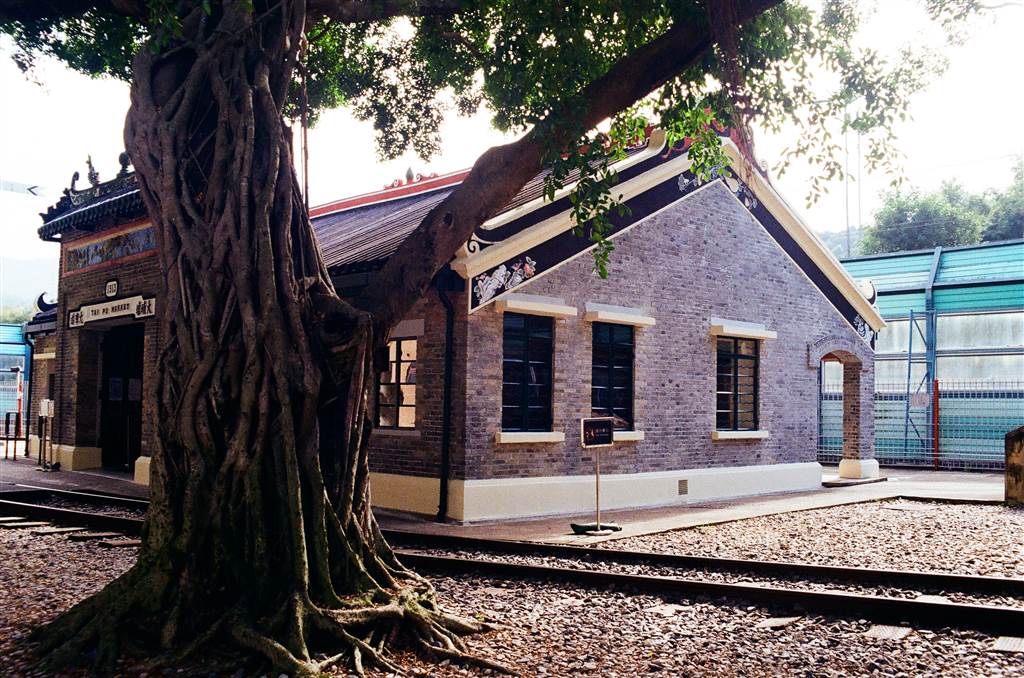
From Steam Power to Electricity Power
Modernization of the trains took place during the 1950s. As will be discussed at greater length below, the KCR introduced a number of diesel-powered electric engine trains during the 1950s and the 1970s. These trains were made in Australia and the United States, unlike the older steam engines, which mostly came from the United Kingdom.
In 1978, the KCR launched the railway electrification project. This has resulted in the spending of more than 3 billion dollars on electric trains, stations, track and signal upgrades. In 1983, full electrification of the whole railway network completed. By then, the KCR’s line has been serving all the modern stops in the New Territories, as what we now know as the East Rail Line.
The Semaphore Signaling System
I spent quite a bit of time in the reconstructed railway office at the museum. Besides the fact that it was well-restored with old and original equipment on display, there was also an educational spot about the signaling system. It explains the use of semaphores, the token instruments and the token with a rattan ring handle to regulate the train’s entry and exit between stations.
This is worth learning on your own, especially if you bring your children. Therefore I won’t spoil it for you here.

Photos: This was the actual signal cabin of the old Tai Po Market Station.
The signal cabin hosts the manually-operated semaphore levers that are critical in ensuring safety for the train’s entry and exit between stations. The semaphores would result in the signaling of the semaphore arm next to the track at the station. They also regulated the switches that control the tracks on which the trains passed. This signaling system was in place until the advent of the electrification of the trains and the centralized computer operation systems.
Sir Alexander 51
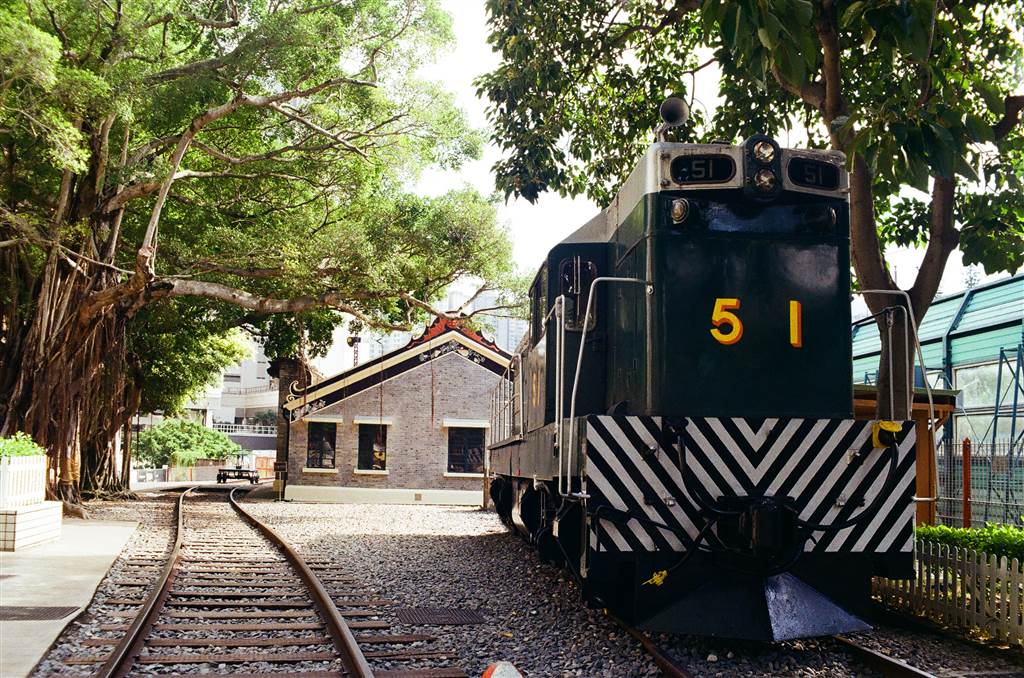
Sir Alexander, Locomotive No. 51, was the first diesel-powered train with electric engine in Hong Kong. The Hong Kong Government purchased Locomotives No. 51 and No. 52 from Australia in 1955. These two trains ushered in the dawn of a new era in Hong Kong’s railway history.
Besides being the first electric engine trains in Hong Kong, Locomotives No. 51 and No. 52 are also special in that they were the first named trains in Hong Kong. No. 51 was named after Sir Alexander Grantham, then Governor of Hong Kong. No. 52 was named Lady Maurine, after Lady Grantham, wife of Sir Alexander Grantham. This practice had continued to Locomotive No. 60.
On July 23, 1983, Sir Alexander pulled the last passenger trains. It continued to haul maintenance and freight trains, and officially retired in 1997. In 2004, the KCRC donated the Sir Alexander to the Hong Kong Railway Museum. The transfer of the train took a full day. At the Ho Tung Lau Depot, staff hinged Sir Alexander on another train, which hauled it in the front, and then another train to push behind its back, for it to be transferred to the tracks at the Hong Kong Railway Museum. And voila, this is what we see at the museum now, a train retired from decades of service to Hong Kong.
Time-Travelling on the Classic Trains
I cannot quite find the words to describe the feeling I had in touring the Hong Kong Railway Museum, especially in these old train compartments that were open to visitors. It felt like I travelled through time in here. Perhaps I should say no more and let the photographs speak instead.
Travelling Through Time: From the third class cabin to the first class cabin.
I especially liked the classic fans on the roof.
Finally, a word of recommendation: check out the Wun Yiu Exhibition on pottery making in Tai Po during the Ming and Qing Dynasties. Both the Hong Kong Railway Museum and the Wun Yiu Exhibition would take about 1.5 hours and it will be worthwhile to do one stone two birds if you have to travel a long way to Tai Po.
How to Get There
The address of the Hong Kong Railway Museum is 13 Shung Tak Street, Tai Po Market, Tai Po.
It’s a 10-minute walk from the Tai Po Market MTR Station. My advice is to walk there from the station.
Sources
The historic descriptions on site at the Railway Museum of Hong Kong.


